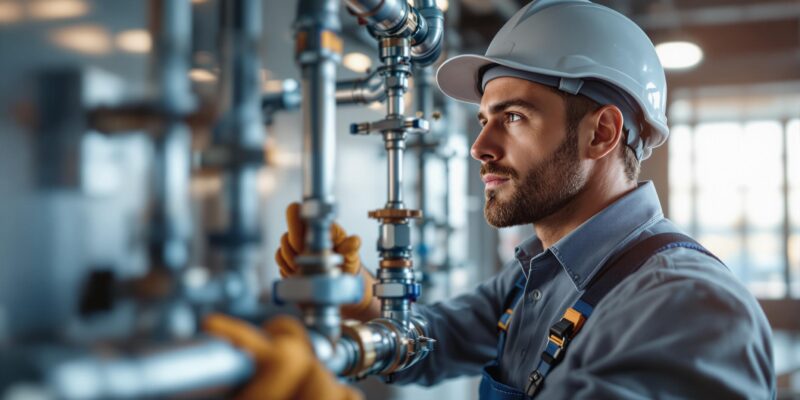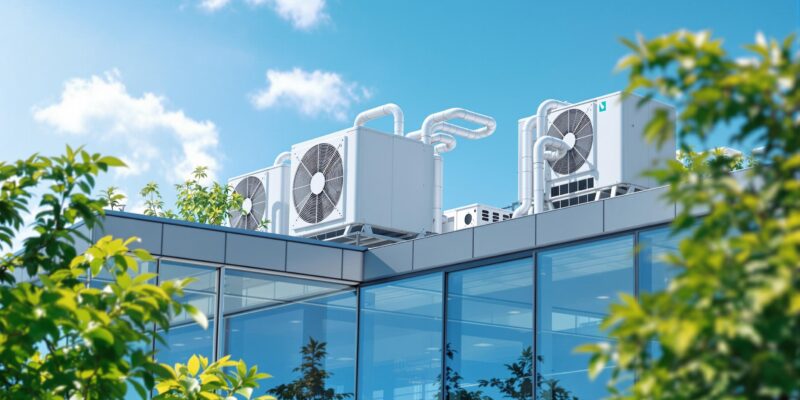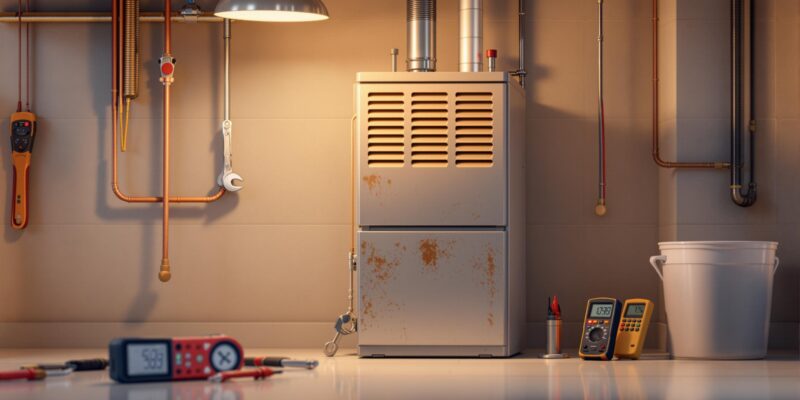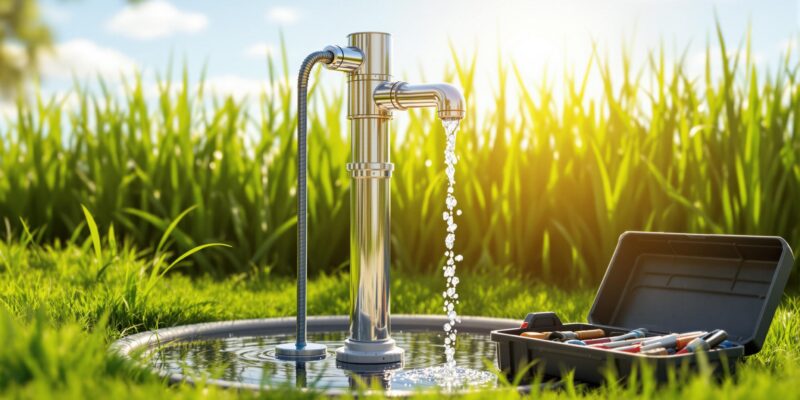Top 6 Plumbing Maintenance Tips for Businesses
Avoid costly plumbing disasters with these six essential maintenance tips for businesses. From regular inspections to installing backflow prevention devices, these strategies can save you money, prevent downtime, and keep your commercial plumbing system running smoothly:
- Conduct Regular Inspections: Schedule annual or quarterly checks to catch issues early.
- Fix Leaks Quickly: Address leaks immediately to save water and prevent structural damage.
- Keep Drainage Systems Clear: Use enzyme treatments and professional cleaning to avoid blockages.
- Use the Right Tools: Invest in high-quality plumbing tools for effective maintenance.
- Train Staff on Plumbing Care: Educate employees to spot and report problems early.
- Install Backflow Prevention Devices: Protect your clean water supply from contamination.
Key takeaway: Preventive maintenance can save businesses up to $2,500 annually while avoiding expensive emergencies. Read on for actionable steps to protect your plumbing system.
Plumbing Maintenance at Commercial Facilities
1. Conduct Regular Inspections
Keeping up with regular plumbing inspections can save you from expensive emergencies and unexpected system failures. These inspections should include both visual checks of accessible parts and the use of camera technology to examine the inside of pipes [6].
For most systems, scheduling inspections once a year is a good rule of thumb. However, older systems or those with heavy usage – like in restaurants, hotels, or manufacturing facilities – may need inspections every quarter [6][3].
Here are the main areas to focus on during inspections:
| Component | What to Check | Why It Matters |
|---|---|---|
| Water Supply | Pressure, pipe condition | Prevent bursts and water waste |
| Drainage System | Flow, blockages | Ensure proper waste removal |
| Plumbing Fixtures | Wear, seals | Stop leaks before they start |
| Backflow Devices | Functionality | Protect water quality |
Modern tools have made inspections more effective. Professionals now use advanced equipment to find hidden leaks and map out pipe locations [7].
Always hire licensed plumbers with experience in commercial systems to ensure a thorough job. They’ll not only catch obvious problems but also spot subtle signs of wear that could turn into bigger issues down the line [6].
Inspections are only part of the solution – acting quickly on any identified problems, especially leaks, is essential to preventing further damage.
2. Fix Leaks Quickly
In commercial plumbing, dealing with leaks as soon as they appear is essential. Ignoring leaks can lead to higher water bills, structural damage, and disruptions to your business. Even a small leak can waste up to 20 gallons of water daily, significantly increasing costs [1].
Here are some effective ways to catch leaks early:
| Detection Method | Key Action & Benefits |
|---|---|
| Water Usage Monitoring | Keep an eye on daily water use to identify sudden spikes that could signal hidden leaks. |
| Visual Inspections | Inspect pipes and fixtures twice a day to find surface-level leaks before they worsen. |
| Professional Assessment | Schedule quarterly plumbing checks to uncover hidden issues using specialized tools. |
What to Do When a Leak Occurs:
- Find the source of the leak and shut off the water supply to that area.
- Call a licensed plumber to handle the necessary repairs.
- Document the issue for your maintenance records.
Signs You Might Have a Leak:
- Damp spots, musty smells, or water stains on walls or ceilings.
- Unusually high water bills or a sudden drop in water pressure.
- Hearing water running when no fixtures are in use.
Make sure your staff is trained to report these signs immediately to prevent minor issues from becoming major problems [1]. It’s also a good idea to keep basic repair tools on hand for temporary fixes while waiting for professional help [8].
Important: Temporary solutions can buy you time but often lead to bigger expenses later. Always prioritize professional repairs with the right tools and materials designed for commercial plumbing systems [8].
While fixing leaks is a priority, keeping your drainage systems clear is just as important for maintaining a dependable plumbing system.
3. Keep Drainage Systems Clear
Keeping your drainage system in top condition is key to avoiding expensive disruptions in commercial operations. Industry data shows that businesses practicing regular drain maintenance can cut plumbing-related downtime by up to 75% [6].
Avoid Blockages with Smart Prevention
Grease buildup, paper products, and food waste are the usual culprits behind commercial drain blockages [1]. To tackle this, use a combination of strainers, monthly enzyme treatments, and routine professional cleanings.
Key Maintenance Tasks
| Task | How Often | Why It Helps |
|---|---|---|
| Professional Cleaning (Hydro-jetting) | Every 6 months | Clears tough blockages and buildup |
| Enzyme Treatment | Monthly | Stops grease and organic buildup |
Top Drain Maintenance Methods
- Power Rodding: Breaks through stubborn blockages like tree roots.
- Hydro-jetting: Blasts away debris and buildup with high-pressure water [5].
Spotting Early Warning Signs
Pay attention to slow drainage, gurgling noises, bad smells, or water backing up – these are red flags that your drains might be clogged and need quick action [4].
Regular maintenance not only helps prevent emergencies but also keeps operations running smoothly. For example, enzyme-based cleaners are a safer and more effective option than harsh chemicals for dissolving organic matter without harming your pipes [4]. This is especially crucial in industries like food service and healthcare, where hygiene is non-negotiable.
Using the right tools and maintenance practices ensures your plumbing system stays efficient and durable, saving you from unexpected headaches.
4. Use the Right Tools and Equipment
The tools you use for commercial plumbing maintenance aren’t just about making the job easier – they’re an investment in preventing expensive repairs and system breakdowns. In fact, businesses that consistently use appropriate plumbing tools can save up to $2,500 annually on repairs and emergency services [6].
Key Commercial Plumbing Tools
| Tool Type | Purpose |
|---|---|
| Diagnostic Tools | Camera inspection systems for internal pipe checks |
| Repair Tools | Pipe wrenches and pliers for accurate repairs |
| Emergency Kits | Quick Seal Pipe Repair kits to manage leaks fast |
| Maintenance Gear | Professional-grade drain snakes for thorough cleaning |
Why Quality Tools Matter
Investing in high-quality, certified plumbing tools isn’t just about performance – it ensures safety and long-term reliability. These tools help keep your plumbing system in top shape and protect your overall investment [9].
Choosing the Right Tools
Select tools based on the specific needs of your facility. For example, Quick Seal Pipe Repair kits are a versatile option for handling leaks across various pipe materials, even in underwater situations [9].
Tool Maintenance Tips
Regular inspections are critical. Check your tools every six months to confirm they’re in good working condition, and replace any worn-out parts immediately [3].
Mistakes to Avoid
Using the wrong tools can cause more harm than good, leading to ineffective repairs and even damage to your system [6]. Always prioritize functionality over cost when choosing equipment [1].
Having the right tools is only part of the equation. Make sure your staff knows how to use them effectively to maximize their impact on your plumbing system’s performance and durability.
5. Train Staff on Plumbing Care
Teaching your staff how to handle plumbing care can cut down on downtime, reduce repair costs, and keep your system running smoothly. In fact, businesses with structured plumbing training programs report up to 30% fewer emergency maintenance calls each year [6].
Key Areas to Cover in Training
| Training Area | Focus Points | Frequency |
|---|---|---|
| Routine Maintenance | Spotting drainage issues, proper fixture use | Monthly |
| Emergency Response | Locating shut-off valves, following protocols | Quarterly |
| Documentation | Logging and reporting maintenance problems | Ongoing |
Establish Clear Reporting Procedures
Set up an easy-to-follow system for reporting plumbing issues. Assign specific contacts and outline steps for handling different types of problems [2].
How to Implement the Training
Design training sessions based on staff roles to make sure everyone knows their part in plumbing care. Include hands-on activities that simulate real-life scenarios. Add these sessions to your regular staff development program [1].
Mistakes to Avoid
Train your team to steer clear of common errors that can harm the plumbing system, such as:
- Putting inappropriate items down drains
- Ignoring strange noises
- Attempting fixes without proper approval
Tracking Progress
Measure the success of your training by monitoring metrics like reported issues, response times, water usage, and the number of emergency repairs needed.
Stay Compliant with Regulations
Include local plumbing codes in your training to ensure compliance and avoid penalties. Keep records up-to-date and hold refresher courses to keep staff informed about best practices [3].
While proper training helps maintain your plumbing day-to-day, consider installing advanced systems, like backflow prevention devices, for added protection.
6. Install Backflow Prevention Devices
Installing backflow prevention devices is a key step in protecting your water system. These devices stop contaminated water from flowing back into your clean supply, keeping your operations safe and compliant.
Types of Devices and Installation
| Device Type | Best Used For | Key Features |
|---|---|---|
| Double-Check Valve Assembly | Low-risk applications | Affordable, requires little upkeep |
| Reduced Pressure Zone (RPZ) | High-risk situations | Offers top-level protection, monitored continuously |
| Vacuum Breakers | Irrigation systems | Easy to set up, dependable function |
Maintenance Tips to Keep in Mind
Testing schedules depend on your facility type and local rules, but inspections every six months are generally a good idea [3]. Focus on:
- Installing devices in accessible areas.
- Ensuring compliance with professional certifications.
- Keeping detailed records.
- Regularly checking performance.
Monitoring and Emergency Planning
Watch for these warning signs:
- Sudden changes in water pressure.
- Visible wear or corrosion on devices.
- Any noticeable drop in performance.
Prepare for emergencies by having:
- Clear steps to isolate the system.
- Contact information for emergency services.
- A plan for documenting incidents.
Consistent maintenance of backflow prevention devices not only protects your plumbing system but also ensures your business runs smoothly without unexpected disruptions. Pair this with other upkeep measures for a reliable water system.
Conclusion
Keeping up with plumbing maintenance helps avoid expensive problems and keeps operations running smoothly. Regular check-ups, fixing leaks quickly, and maintaining clear drainage systems can improve efficiency, cut costs, and prevent interruptions.
By following these six tips, businesses could save as much as $2,500 each year – transforming maintenance into a smart investment for steady operations [6]. Preventive care not only lowers expenses but also extends the life of plumbing systems, ensures compliance, and minimizes downtime.
Licensed plumbers are key to managing complex systems effectively. Their routine assessments catch potential issues early, helping to avoid major disruptions [3].




